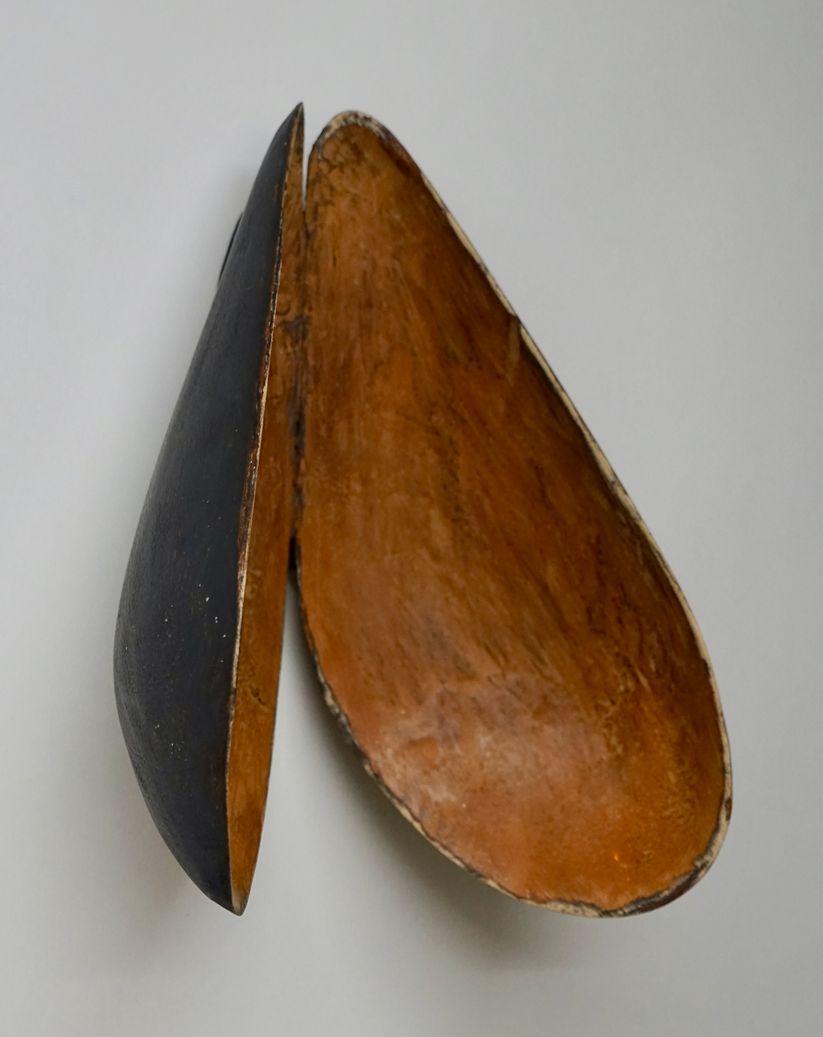Text: Irene Daum | Section: Articles about Artists
Abstract: In his sculptures, Paul Diestel deals with transformation processes of plants and animals, which are based on his nature observations. He uses materials from nature (primarily wood) and treats them with other materials found in nature, such as earth or ash. This creates sustainable objects that integrate into the cycle of nature.
Born in 1996, the sculptor Paul Diestel reflects in his artistic work on organic forms and on the processes of their evolution and transformation. After studying Fine Arts at the Kunsthochschule Kassel, he has already created a unique visual and formal language at a young age, and he continues to develop his style supported by renowned scholarships and exhibitions.
Paul Diestel lives and works in the rural Rhön area and the observation and exploration of growth and changes in plants and animals in the vicinity are an essential part of his work which also influences the titles of his exhibitions. Examples are Herbarium in 2019 and transform in 2021. His work demonstrates in an impressive way how the dedication to biology as a central theme shapes the work of an artist. The uniqueness of the organic forms he finds in nature and the transformation processes of growth and decay inherent in nature are his most important sources of inspiration.
Guided by sensory impressions, the artist traces the forms which characterize, for example, seeds, sunflower seeds, or a butterfly in the pupal stage. His work reflects the encounter between man and nature which is not simply translated into naturalistic images but finds its expression in objects of different dimensions shaped by his personal experience and interpretation.


Paul Diestel’s preferred material is wood (oak, poplar, or silver maple), which he works on using other substances found in nature such as earth, ash, lime and rabbit glue. He sands the surface and applies pigments in layers which gradually fuse with the wood and thus combine in an organic process to form the finished work. In this way, he creates sustainable art works which, like the source materials, are incorporated into the cycle of nature. A good example is the object Acer, maple seeds in a formation of three as an oversized expressive wooden sculpture in space which conveys different spatial effects depending on the perspective of the viewer. Due to the different layers which make up the surface, varying nuances and images are evoked, depending on light effects.

Paul Diestel’s sculptures represent basic organic forms without superfluous elements; they are balanced compositions focusing on the essential. They are snapshots in a process of unstoppable transformation which already carry the coming. His art works are an appreciation of the beautiful forms of nature which is guided by the scientific observation and exploration of biological changes in nature. The artist uses materials taken from nature which are transformed and reshaped by art into beautiful forms of a different kind.
Paul Diestel`s art symbolizes a striving for harmony between man and nature. His work aims to stimulate the viewers` reflection on the cycle of nature of which he is also a part. The Galerie Löhrl is presenting a solo exhibition of recent works by Paul Diestel in its gallery space in Mönchengladbach, Kaiserstr. 58-60 entitled transform until the end of August 2021.
Photo above the text: Paul Diestel: Acer (2019). Photo: Anja Kühne.
How to cite this article
Irene Daum (2021): Paul Diestel – Forms of Nature. w/k–Between Science & Art Journal. https://doi.org/10.55597/e7012


Be First to Comment